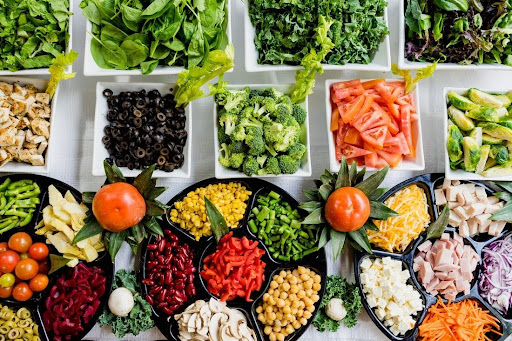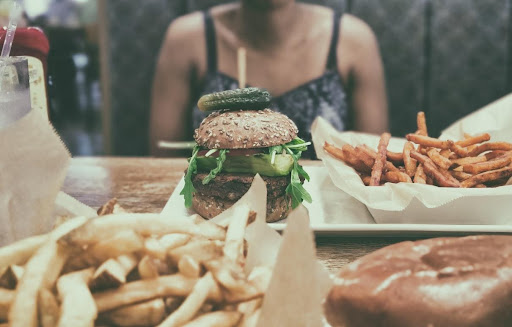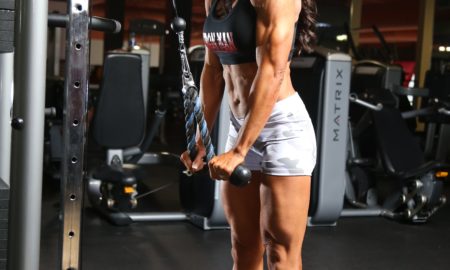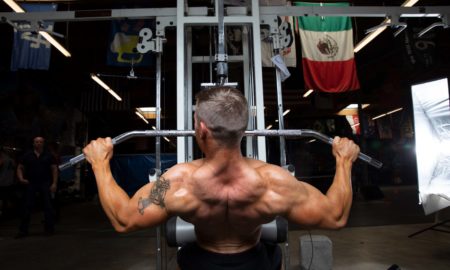

Do you want to get bulkier muscles without losing your slim stature? You might be wondering if you can have the two at a time. Yes, you can.
Having a six-pack has always been a goal for fitness enthusiasts. They want to gain muscles on certain parts of the body whilst staying ripped.
Unfortunately, the body doesn’t want to stay lean. It is much easier for the body to store fat than to build muscles or burn fat. Therefore, if you want to get bigger muscles while maintaining lean muscle mass, you will have to put in time and effort.
This article will discuss the right way to bulk, so you gain more muscles and not unwanted body fats. It will also point out the foods you should eat, the ones you should avoid, and give other tips that will help keep off the extra pounds while you beef up your muscle mass.
What is clean bulking?
The two terms commonly used in bodybuilding and fitness are ‘bulking’ and ‘cutting’. Bulking involves eating more calories than the body needs daily to maintain its normal weight. This is known as maintenance calories.
On the other hand, cutting means reducing the daily caloric intake and eating fewer calories than your body burns.
The idea behind bulking is to eat more food to put on more weight, while cutting involves eating less to lose the fat.
Bodybuilding and fitness programs typically pass through these two phases. During the bulking phase, you put on more muscles and some fats and then lose the fat during the cutting phase to give you that lean and ripped look.
But then, all bulking is not the same. There is clean bulking, and there is dirty bulking. Dirty bulking involves eating all kinds of calories without caution. People who bulk dirty eat a lot of calories from high-calorie foods, including foods that have little or no nutritional value.
In contrast, clean bulking involves eating more calories in a moderate amount. It also involves making healthier food choices.
When it comes to a calorie surplus, clean bulking and dirty bulking are the same because they involve increasing your daily caloric intake above the normal maintenance calorie. However, they are different because, with clean bulking, you gain a minimal amount of fat.
When you bulk dirty for a prolonged period, you will gain a lot of mass/weight, and the mass you will gain will be fat and not muscle mass. This bulking method doesn’t support fitness and bodybuilding. With it, you end up looking fat and overweight. Since fatty tissues cannot be converted to muscle tissue, it means you give yourself additional work to diet and work out even harder to lose the fat you gained.
Clean bulking allows you to achieve your muscle-building goal because it has two main aims:
- To gain a very minimal amount of body fat
- To gain lean muscle tissue
This shows that clean bulking is the best way to bulk if you want to gain more muscle mass with less fat.
How to start a clean bulk
While weight loss is more commonly discussed than weight gain, most bodybuilders are more interested in what they will do to gain weight so as to increase their muscle mass and strength, and clean bulking is the way to do that.
Aside from being healthy, clean bulking is sustainable. You might not gain weight as fast as dirty bulking, but you also don’t gain excess fat or have high cholesterol and blood sugar levels.
To start clean bulking, the first thing you have to do is find out your maintenance calories. Your body’s maintenance calories are the number of calories you need to consume every day to maintain your weight. Several online calculators can help you calculate your maintenance calories; however, you can also learn how to calculate the maintenance calories yourself.
When you have established your maintenance calories, you have to consume a 10-20 percent calorie surplus. For instance, if you weigh 65kg and have a daily maintenance calorie of 2,200, to clean bulk, you should aim at consuming an extra 15 percent of your maintenance calories.
Since your maintenance calorie is 2,200, 15 percent of 2,200 is 330. So you add an extra 330 calories to your daily caloric intake. You can also increase the extra caloric intake to 20 percent of your maintenance calories if your weight doesn’t seem to be increasing.
Note that to gain more muscle size, you need to consume more protein macronutrients. You should opt for a daily protein intake of 0.7-1 gram per body weight pound. This means you consume 1.6 to 2.2 grams of protein per kg to aid the growth of the muscles. The rest of your daily caloric intake should be made of other macronutrients (carbohydrates and fats).
When to bulk
It is always best to lean down before you start bulking. This is mainly for people who need to lose some more pounds of fat to look their best. Leaning down before bulking will help you get the most out of your bulk.
Bodybuilding aims not just to gain more muscle but also to make a nice difference in appearance. Cutting off the extra fat before bulking improves your physique, gives faster results, and gives you the little room you need to gain fat while bulking.
Also, looking at it from the angle of time or season, the usual time most people bulk is during the winter. Note that bodybuilding is a lifelong journey and not something you practice at intervals. Thus, it is usually better to cut in from early spring through summer and bulk in the winter, and here is why:
- You might want to look lean and shredded for your summer vacation
- Summer weather is usually warm, and being on lower body fat will not be a problem, but it is the reverse with winter
- You tend to be more active during the spring and summer, going out hiking, cycling with friends, etc., but winter usually keeps people indoors more and offers an ideal time for bulking.

Foods to eat and avoid
Unlike dirty bulking, to clean bulk, you have to focus on whole, unprocessed foods. You can take high-calorie foods at intervals, but that should be limited. You can enjoy all foods when taken in moderation, but you must know that some foods make it harder to maintain a controlled calorie surplus, and you must limit or avoid such foods.
Foods to eat when clean bulking include:
- Lean protein: Fish, turkey, chicken, pork, cottage cheese, Greek yogurt, tofu, eggs, protein powders
- Fruits: Apples, pineapples, bananas, oranges, berries, and grapefruits
- Vegetables: Non-starchy vegetables like mushrooms, asparagus, green beans, tomatoes, carrots, onions, celery, dark leafy greens like collard greens, spinach, kale and Swiss chard, and cruciferous vegetables like brussels sprouts, broccoli, cauliflower and cabbage
- Legumes: Chickpeas, kidney beans, black beans, lentils and soybeans
- Whole carbs: Quinoa, oats, sweet potatoes, brown rice, wheat bread, whole grain pasta
- Healthy fats: Olive oil, avocado, fatty fish, nut butter
- Nuts and seeds: Cashew nuts, chia seeds, flaxseed

Foods to avoid or limit include:
- Highly processed foods: Canned soups, fried foods, chips, full-fat ice cream, pastries, cookies and cakes, and processed meats
- Beverages: Sweet tea, soft drinks, sweetened coffee, and other carbonated sugary drinks
- Saturated fats: Butter, margarine, and hydrogenated oils
Potential benefits
Compared to dirty bulking, clean bulking has lots of advantages. Below are some potential benefits of clean bulking:
- You eat highly nutritious foods
A clean bulk diet tends to be more nutritious than a dirty bulk diet because the diet is more composed of whole, unrefined foods. A clean bulk diet contains more minerals, vitamins, phytonutrients, and even fiber. Phytonutrients provide anti-inflammatory effects to the body, while fiber is associated with good gut health.
- Limits excess fat gain
Clean bulking makes it easier to control your caloric intake in order to prevent excess fat gain. According to data, a calorie surplus of 350-500 calories per day effectively promotes muscle gains while reducing body fat storage. This number is in line with the recommended calorie surplus for people that are clean bulking.
- It keeps the body healthy and strong
You need to be healthy and strong in order to hit the gym. The careful food consumption approach of clean bulking will most likely reduce the health risks associated with consuming excess calories.
Consuming a significant calorie surplus increases the risk of developing high cholesterol and blood sugar levels, further increasing the risk of developing chronic diseases like diabetes and cardiovascular diseases. But, with clean bulking, these health risks are mitigated since you work with a controlled calories surplus that emphasizes whole, unrefined foods.
Even clean bulking has its cons, and you must understand your limitations. The cons of clean bulking include:
- Strict diet
- Slow progress
- Taking more time to prepare meals
Even though it is advisable to regulate your caloric intake, you don’t have to be too strict on yourself. Take care not to overdo it. You need to strike a balance between what you want and what your body really needs.
Conclusion
Every bodybuilder aims to gain more muscles while looking slim. It is a case of looking big and not fat. Clean bulking is the ideal way to achieve this. With clean bulking, you consume more than your usual maintenance calories; however, you still stick with the healthy, whole, unprocessed foods with higher nutritional value. The aim of this is so you don’t gain too much fat while trying to gain muscles.
You must keep in mind that the effects of consuming surplus calories are different for each individual. If you have any underlying health condition, it would be best to talk to your doctor before you start bulking.























You must be logged in to post a comment Login